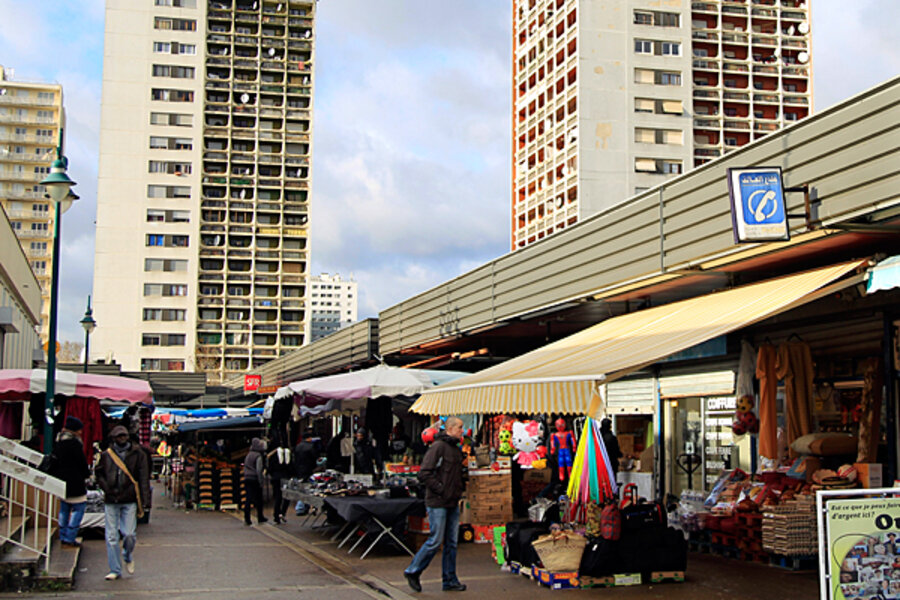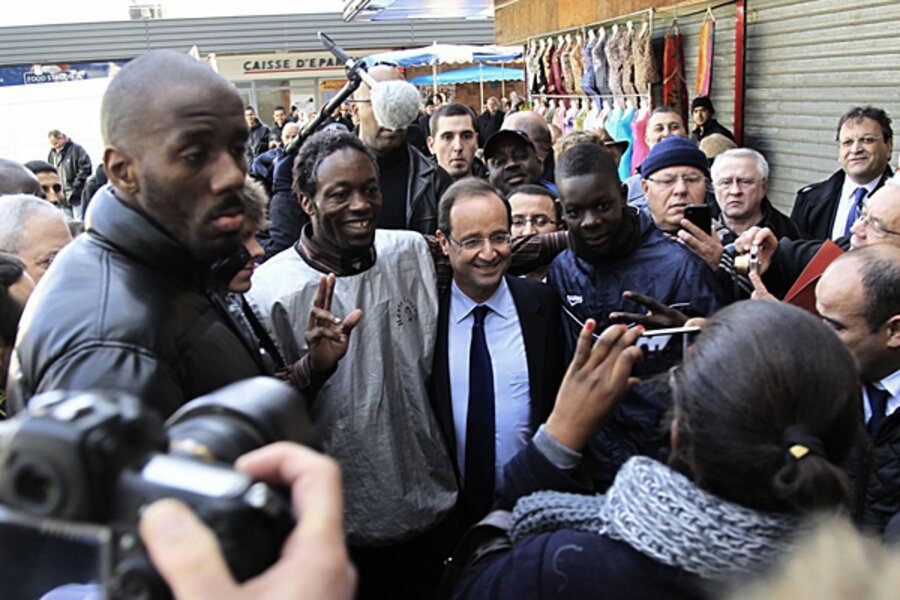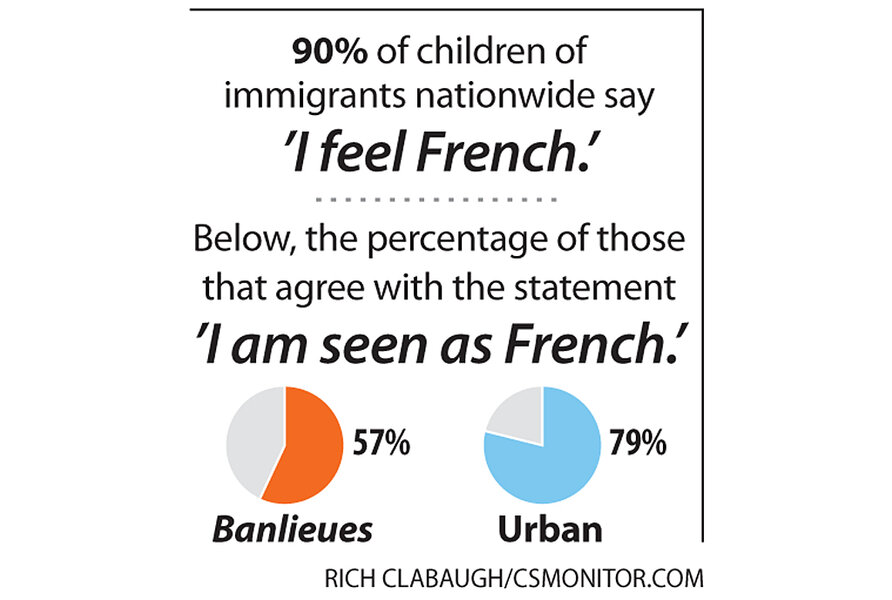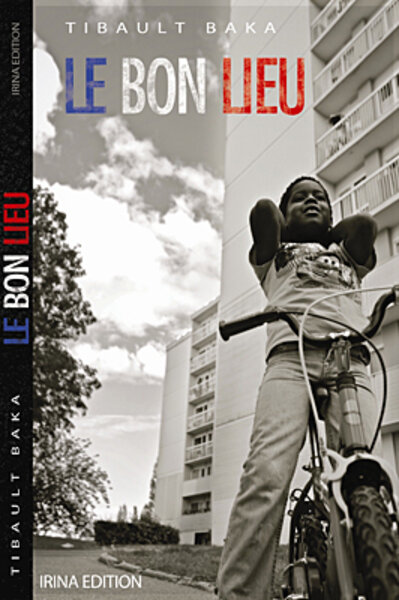In France's suburban ghettos, a struggle to be heard amid election noise
Loading...
| Clichy-sous-bois, France
Inside the French suburbs, referred to here as "zones of banishment" or "the lost territories of France," the 2012 presidential elections seemed like a good time to wake up the nation.
In a small office in the suburb of Clichy-sous-Bois, a group of mostly Arab and African 20-somethings hit on an idea: Create a "crisis ministry of the suburbs." It would address France's ignorance about the 731 areas ringing the country's biggest cities, known officially as "urban sensitive zones," where most of France's non-European minorities live. Geographically, they are suburbs, but socioeconomically, they resemble the US inner city.
Paris Mayor Bertrand Delanoe gave the upstart "ministry" a temporary office next to City Hall. For two days, rappers, artists, and activists merrily held court with a French media that rarely makes it to the suburbs and worked on a 120-point reform plan. Several presidential candidates, including front-runner François Hollande, showed up.
But the good vibe didn't last. Days later, Mohammed Merah, a self-styled Islamist radical born to Algerian parents in a Toulouse suburb, shot and killed two soldiers, three children, and a rabbi. The killings seemed to reinforce all the stereotypes and fears about the troubled suburbs.
"The suburbs have no place in the politics of France," says Abdel Elotrani, a young man in a tracksuit who helps lead the Clichy ministry. "We watch TV election debates that raise every subject but the banlieue [suburbs]. We got some attention. Then, after Merah, the subject changed from the suburbs to security and terror again. But we aren't giving up."
Who lives in the banlieue?
The suburb residents are mostly Arab or African, often Muslim and poor. One-third live below the poverty line. Some are immigrants, but increasingly they are second- and third-generation immigrants, descended from guest workers who arrived in the 1960s and '70s.
Thirty-nine percent of the residents are under age 25, and youth unemployment tops 40 percent (compared with 20 percent and 22 percent, respectively, nationwide).
In a literal way, the suburbs are zones of separation. Those outside Paris are set apart from the capital by the périphérique – a roaring eight-lane road that encircles the city. On one side is success, culture, and wealth – modern France. On the other is the banlieue – a place Parisians never go. The reverse is also true. In dozens of interviews, most banlieue residents said they had been to Paris only a few times.
Some 7.5 percent of French live in this "other France." Residents call themselves the nation's "illegitimate children" and often say they are second-class citizens. Government investment in the area is historically low, and a hefty portion of the $48 billion spent there in the last decade only arrived after riots in the town of Clichy-sous-Bois.
In 2005, police stopped 15 youths walking home from soccer practice for an ID check. Three ran off, heading to a nearby electrical power station. Two were accidentally electrocuted. The riots that ensued were initially limited to Clichy, but days later a police tear-gas canister was lobbed into a mosque during Ramadan, and the unrest mushroomed.
Whether the banlieue will give rise to further unrest is something no one can agree on. They are the front line of the tensions between white Europeans and the Continent's growing minority – mostly Muslim – population. Ongoing low-level confrontations between police and locals have the potential to explode, as do the constant contradictions facing banlieue residents.
France claims the greatest social equality in the world and officially bans ethnic and religious identification, but it also gave its far-right party 18 percent of the vote (its highest vote ever) in recent presidential elections. Much of Marine Le Pen's campaign targeted minorities, implying they were unwanted and un-French.
"Some media have called these [2012] elections trivial, but that is absolute nonsense. In fact there is a huge issue in France about who we as French are and what we want," says Karim Amellal, who grew up in the banlieue and now owns a media company in Paris. "The reality of the suburbs is a challenge to the reality and practice of the principles of the French republic. What is more basic than that?"
Defying caricature
The town of Clichy-sous-Bois is part of Seine-Saint-Denis, a 100-square-mile zone separated from Paris by the périphérique that is home to France's highest concentration of minorities.
Clichy was built after World War II as an upper-middle-class town, but when no train line to Paris was built, those who could afford to leave did. Dormitory towers sprang up for the new residents, mostly workers from former French colonies in African and Arab colonies.
By the late 1990s, "You were seen as a loser if you were white and still lived here," a local official says. There is still no train link to Paris.
Unlike urban slums in the United States, the suburbs are not a wasteland. Clichy is depicted in French media as run-down tenement towers. But there are also neighborhoods of charming single-family homes and small roads running through acres of blooming trees and fields. Many towns feature old granite churches, outside of which locals wait for buses. The innovative architecture and Art Deco painting of upper- and middle-class areas are beginning to appear here.
"When I came out here to work, everyone said, 'It's awful. Be careful. It's dangerous,' " says a French civil servant of Algerian heritage. "But now I plan to move here. There is life. There are young people playing. You don't see that in Paris. It is real. Yes, there are problems, but I like it," he says. Nearby, children with their faces painted to look like forest animals stream out of a stores.
Yet there are few gathering places. Community energy is high, but there is no Parisian culture of corner cafes.
"We don't have a cinema, a swimming pool, an unemployment office, any cafes, or hangouts," says Youssef Sbai, director of a children's center in the apartment complex Bois du Temple Towers, where he was raised. "But after the riots [of 2005] they did build a big new police station."
'A beautiful woman with a bad reputation'
In Villiers-le-Bel, near Clichy, young men mill around at the entrances of long apartment complexes. When a police car struck and killed two teens here in 2007, it resulted in riots. Police mistreatment is the root of most of the banlieue grievances, says Catherine de Wenden, head of the sociology section at Sciences Po in Paris.
Tibault Baka was born here. He's a compactly built 26-year-old who recently penned a novel and speaks in intense, exact sentences.
Mr. Baka is greeted like a local celebrity on the streets, which he is. He became a sensation in April, after confronting President Nicolas Sarkozy on TV. In 2007 the leader had promised a "Marshall Plan for the suburbs," but it never materialized. When Mr. Sarkozy starting talking glossily about the banlieue, Baka piped up. "I told him that housing and jobs are a problem everywhere. The problem for us is reputation. Our main problem is image. The banlieue is like a beautiful woman with a bad reputation. The view people outside have of us is what keeps the kids from dreaming big."
Banlieue youths increasingly want to move elsewhere – Canada, Britain, the US. Nearly every young person interviewed wanted to leave or has friends who have left. Mohamed Ghilli, who is of Moroccan descent, got a degree in finance in France and studied English in Britain, but could not find a job when he returned. He now runs a group that helps banlieue youths find jobs, even as he prepares to leave for Singapore if he can't find a job himself.
"Other countries are more dynamic," says Mr. Sbai, who runs the children center in Clichy. "France is stale and not going anywhere, and when you say you are from Clichy, that's an image that is hard to surmount."
Living on 'fault lines'
In October, when Islam expert Gilles Kepel published a major report on Clichy, Le Monde ran a sensational full-page cover headlined, "Suburbs, Islam: The Disturbing Study." Mr. Kepel had indeed found that amid stagnation in the suburbs, identification with Islam had risen among Muslim youths – but it had not led to a rise in radicalism.
"The media in France read that headline and framed every report as if we found a hostile encounter between Islam and France," says Leyla Arslan, coauthor of the report. "I said, 'No! Just the opposite!' We were showing that people want equality and normality and the same rights and no special treatment. We found ... kids [were] so excluded that Islam was being turned to as a way to express a deeper identity. That isn't surprising for human beings."
The newest generation of the banlieue are growing up on fault lines. They learn in civics class that France is one of the world's most progressive societies – an egalitarian utopia without issues of race and religion. They study a social compact based on sky-high ideals engraved on government buildings: "liberty, equality, fraternity." But that is at odds with their stigmatized existence in the banlieue. Mr. Amellal describes it as a sense of "schizophrenia."
"Elites on the left deny there is any problem. Discrimination doesn't exist, because we are French! It is impossible! Incredible! Never! On the right, they hate you. Being Muslim is bad. Immigrants are bad," he says.
"Your parents are from Algeria or Morocco. They are conservative, very Muslim. But you are a teenager living in a European city. What do you want? To be successful! To get a job. To be fully French, like the other successful people.
"So this creates all these contrasts in your head," he says. "You become fragmented."










